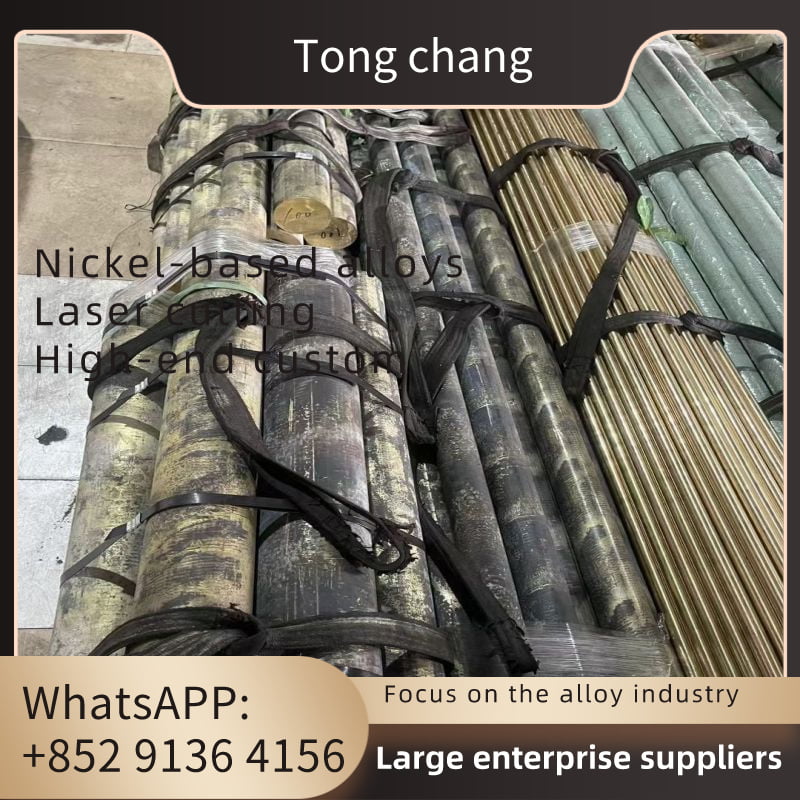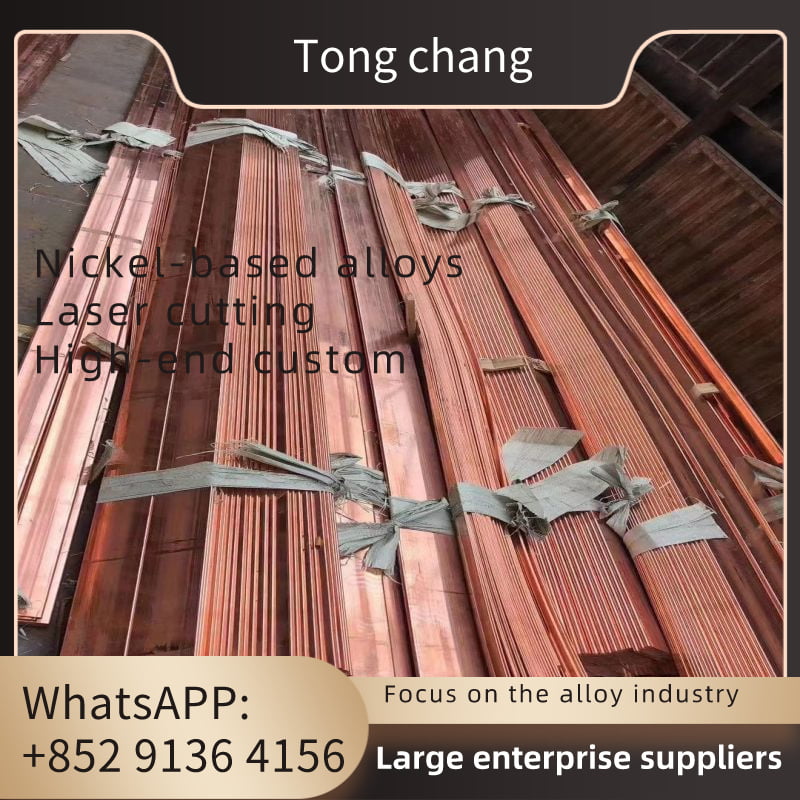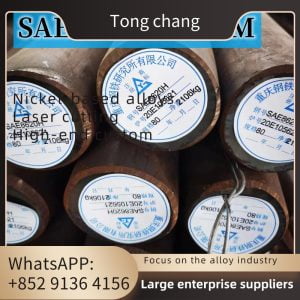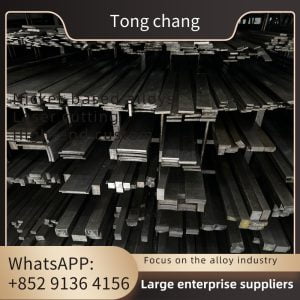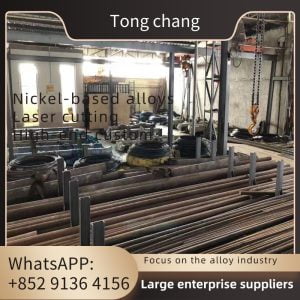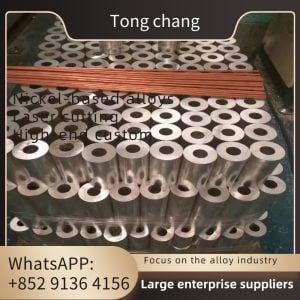| Specification: | ASTM B514/ ASME SB514 | Grade: | UNS NO8810/1.4958/INCOLOY 800H |
|---|---|---|---|
| Type: | Nickel Alloy Tube | Ends: | BE, PE |
| Length: | 6M Or Specified Length As Required | Packing: | Ply Wooden Case |
| High Light: | astm b514 incoloy 800 pipe, uns n08810 incoloy 800 pipe, 1.4876 incoloy 800 pipe | ||
ASTM B514/ASME SB514 DIN 1.4958/UNS N08810/INCOLOY 800H/800HT/800 WELDED TUBE
Overview:
800 (UNS N08800), 800H (UNS N08810), and 800HT (UNS N08811) alloys are nickel-iron-chromium alloys designed to resist oxidation and carburization at elevated temperatures. The nickel content, 32%, makes the alloys highly resistant both to chloride stress-corrosion cracking and to embrittlement from precipitation of sigma phase. The general corrosion resistance is excellent. In the solution annealed condition, the 800H and 800HT alloys have superior creep and stress rupture properties. All three versions of the basic 800 alloy have been approved as materials of construction under ASME Boiler and Pressure Vessel Code, Section I- Power Boilers, Section III-Nuclear Vessels, and Section VIII-Unfired Pressure Vessels.
800, 800H and 800HT alloys are identical except for the higher level of carbon (0.05 to 0.10 percent) in the 800H alloy, and the addition of up to 1.00 percent aluminum + titanium in the 800 AT alloy. The 800 alloy is normally used in service at temperatures to approximately 1100°F (593°C). The 800H and 800 AT alloys are normally used above approximately 1100°F where resistance to creep and stress rupture is required.
Specification:
ASTM B514-19 Standard Specification for Welded Nickel-Iron-Chromium Alloy Pipe
| Specifications | ASTM B514 / ASME SB514 |
| Welded Pipe Size | 1 / 8"NB – 18"inches |
| Length | up to 26 Meters |
| Type | Welded, ERW |
| Form | Round Pipes, Square Pipes, Rectangular Pipe |
| Thickness | 0.3 mm to 50 mm |
| Schedule | SCH20, SCH30, SCH40, STD, SCH80, XS, SCH60, SCH120, SCH140, SCH160, XXS |
| End | Plain End, Beveled End, Treaded |
Equivalent Grades:
| STANDARD | WERKSTOFF NR. | UNS | JIS | BS | GOST | AFNOR | EN | OR |
| Incoloy 800H | 1.4958 | N08810 | NCF 800H | NA 15(H) | ЭИ670 | Z8NC33-21 | X5NiCrAlTi31-20 | XH32T |
Chemical Composition:
| Grade | C | Mn | Si | S | Cu | Fe | Ni | Cr | Al | Ti |
| Alloy 800H | 0.05 – 0.10 | 1.50 max | 1.00 max | 0.015 max | 0.75 max | 39.50 min | 30.00 – 35.00 | 19.00 – 23.00 | 0.15 – 0.60 | 0.15 – 0.60 |
Mechanical Properties:
| Element | Density | Melting Point | Tensile Strength | Yield Strength (0.2%Offset) | Elongation |
| Incoloy 800H | 7.94 g/cm3 | 1385 °C (2525 °F) | Psi – 75,000 , MPa – 520 | Psi – 30,000 , MPa – 205 | 30 % |
Corrosioin Resistance:
The chromium and nickel contents of the 800, 800H and 800HT alloys are higher than those of the familiar Type 304 stainless steel alloy. Under many conditions of service, the performance of 800, 800H, 800HT and Type 304 alloys are similar. For example, comparable behavior can be expected in most rural and industrial atmospheres and in chemical media such as nitric acid and organic acids. Neither 800, 800H and 800HT nor Type 304 alloys are suggested for sulfuric acid service except at lower concentrations and temperatures. Like the austenitic stainless steels, 800, 800H and 800HT alloys are subject to sensitization (precipitation of chromium carbides at grain boundaries) if heated for excessive time in the 1000-1400°F (538-760°C) temperature range. The sensitized metal may be subject to intergranular attack by certain corrosive agents including pickling acids or the boiling 65% nitric acids (Huey) test.
The 800 alloys are highly resistant, although not totally immune, to stress-corrosion cracking. In extensive field experience, the 800 alloys have shown excellent service performance in many types of equipment in the petroleum, chemical, food, and pulp and paper industries. Thus, the 800 alloys may offer a distinct advantage for use in moderately corrosive environments where service experience has indicated a tendency toward stress-corrosion cracking of other austenitic stainless steels. However, the alloy is not immune to stress-corrosion cracking as judged by the extremely severe magnesium chloride test.
Oxidation Resistance:
The 800 alloys are particularly well suited for high temperature applications such as furnace parts and related heating equipment, for petrochemical reforming units and isocracker tubes, and for handling superheated steam in nuclear and conventional power plants. With the specified high levels of chromium and nickel, the alloys offer superior resistance to oxidation and scaling and to carburization as well.
The following oxidation data for 800 alloy were obtained by exposing samples to the indicated temperature for 100 hours in still air and cooling. In general, total weight gains greater than 10 mg/cm2 indicate that additional exposure at these temperatures will lead to failure.
Since oxidation rates are greatly affected by heating and cooling rates as well as by the atmospheres involved, these data can only be used as approximate guidelines.
1. Valves, fittings, and other components exposed to corrosive attack from industrial furnaces operating at temperatures ranging from 1100-1800° F
2. Heat-treating systems
3. Cracking of Hydrocarbons
4. Super-heaters and re-heaters in power stations
5. High-pressure vessel
6. Heat exchangers


